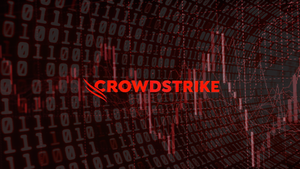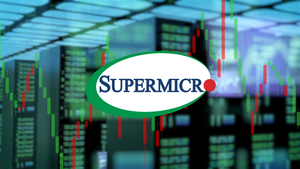
Mid-2025 has proven to be a period of remarkable resilience and significant shifts in the global financial landscape. After navigating a turbulent first half marked by aggressive trade policies and geopolitical uncertainties, the stock market, particularly in the U.S., has not only recovered but surged to new all-time highs. This unexpected rebound, driven by robust corporate earnings and a renewed focus on technological advancements, paints a complex picture for investors, highlighting both the enduring strength of the market and the concentrated nature of its recent gains.
The S&P 500's Ascent and the Tech Titans' Reign
The first half of 2025 was a tale of two quarters for the U.S. stock market. Following a volatile Q1, which saw a significant sell-off in April triggered by sweeping trade tariffs, the market staged a powerful "V-shaped" recovery in Q2. The S&P 500 (SPX) ended the first half up approximately 5.5% (6.2% with dividends) and continued its upward trajectory into July, reaching a year-to-date return of 7.78%. This impressive performance included 12 new closing highs since April 8, with a notable 10 of those occurring in July alone. The Nasdaq Composite (IXIC) mirrored this strength, gaining 7.5% in the first half and recording its best quarter in five years in Q2, while the Dow Jones Industrial Average (DJIA) rose 4% in the first half.
A significant driver of these gains has been the continued, and in some cases, intensified, concentration of performance in large-cap technology stocks. While the research indicates that large-cap stocks generally continued to outperform mid-cap and small-cap stocks, the narrative around Artificial Intelligence (AI) remained paramount. Companies deeply embedded in the AI ecosystem, from chip manufacturers to software developers, have seen their valuations soar, attracting substantial investor capital. This has led to a market where a handful of mega-cap tech companies exert an outsized influence on overall index performance, raising questions about market breadth and sustainability.
Periods of intense volatility were a defining characteristic of this period. The most dramatic instance occurred on April 2, 2025, when President Trump's "Liberation Day" announcement of broad tariffs on nearly all imported goods sent shockwaves through global markets, leading to the largest decline since 2020. The Nasdaq briefly entered bear market territory, and the S&P 500 lost 10.5% in a matter of days. However, a subsequent 90-day pause and partial reversal of these tariffs on April 9 sparked a historic rally, with the S&P 500 experiencing its biggest one-day gain since 2008. These sharp swings underscore the market's sensitivity to policy shifts and geopolitical developments, even as underlying economic fundamentals remain robust.
Tech Giants and Tariff-Proof Performers Emerge as Winners
The mid-2025 market environment has clearly delineated winners and losers, largely dictated by their exposure to technological innovation, particularly AI, and their resilience to evolving trade policies.
The undisputed winners continue to be the large-cap technology companies, especially those at the forefront of Artificial Intelligence. Companies like NVIDIA Corporation (NASDAQ: NVDA), a leading designer of graphics processing units (GPUs) crucial for AI, have seen their valuations continue to climb, driven by insatiable demand for their products. Other tech giants such as Microsoft Corporation (NASDAQ: MSFT), with its extensive cloud computing and AI integration, and Alphabet Inc. (NASDAQ: GOOGL), with its AI research and applications, have also been significant beneficiaries. Their strong earnings reports and optimistic outlooks on AI adoption have fueled investor confidence, contributing disproportionately to the S&P 500's gains. This concentration of wealth in a few dominant players highlights a "winner-take-most" dynamic in the current tech landscape.
Beyond traditional tech, the market has seen the emergence of new thematic winners. Companies holding large cryptocurrency reserves, often dubbed "Crypto Treasury Stocks," have acted as high-beta proxies for digital assets, attracting investors looking for exposure to the volatile but potentially lucrative crypto market. Furthermore, Electric Vertical Take-Off and Landing (eVTOL) stocks have soared following government backing and executive orders aimed at fast-tracking regulation and testing for electric air mobility. This indicates a broader appetite for disruptive technologies beyond just AI.
On the other hand, small-cap stocks, as represented by the Russell 2000 (RUT), have largely underperformed, down about 2.42% for the period. This suggests that the benefits of the market rally have not been evenly distributed, with smaller companies potentially more vulnerable to economic headwinds or less able to capitalize on the dominant tech trends. Sectors heavily reliant on global supply chains or those with significant exposure to the newly imposed tariffs have also faced headwinds, though the partial reversal of tariffs provided some relief. Companies with less robust balance sheets or those unable to absorb increased import costs have found themselves at a disadvantage in this volatile environment.
Broader Implications: A New Era of Geopolitical Market Sensitivity
The market dynamics of mid-2025 fit squarely into broader industry trends emphasizing technological disruption, particularly AI, and the increasing impact of geopolitical factors on global trade and investment. The rapid advancements and widespread adoption of AI are not just a tech trend; they are reshaping industries from healthcare to manufacturing, creating new efficiencies and business models. This pervasive influence means that companies across various sectors are either investing heavily in AI or risk being left behind, leading to a significant reallocation of capital towards AI-centric enterprises.
The most profound ripple effect has been on global supply chains and international trade relations. The initial imposition of sweeping tariffs by the U.S. government sent shockwaves through industries reliant on imported goods, forcing companies to re-evaluate their sourcing strategies and potentially onshore production. While the subsequent partial reversal offered a reprieve, the underlying uncertainty remains, prompting businesses to build more resilient and diversified supply chains. This has implications for competitors and partners globally, as companies adjust to a potentially more fragmented and protectionist trade environment. Regulatory bodies are also grappling with how to manage the economic fallout and potential inflationary pressures arising from these trade policies.
Historically, periods of intense trade disputes have often led to market instability. The current situation draws parallels to past trade wars, where tit-for-tat tariffs escalated tensions and dampened global economic growth. However, the swift market recovery after the partial tariff reversal suggests a market that is perhaps more accustomed to, or at least quicker to price in, such policy shifts. The resilience demonstrated by corporate earnings, even in the face of tariff threats, indicates that many companies have developed strategies to absorb or pass on costs, or have diversified their operations sufficiently to mitigate the impact. This period also highlights the growing influence of government policy, particularly executive orders and trade announcements, as immediate market movers, sometimes overshadowing traditional economic indicators.
What Comes Next: Navigating Continued Volatility and Innovation
Looking ahead, the stock market in the latter half of 2025 is poised for continued dynamism, characterized by both significant opportunities and persistent challenges. In the short term, the market's trajectory will heavily depend on the evolution of trade policies. Any further escalation or de-escalation of tariffs will likely trigger immediate and substantial market reactions. Investors will be closely watching for signs of sustained economic growth, particularly in the U.S., and the Federal Reserve's monetary policy decisions. While the Fed held rates steady in the first half, expectations of two rate cuts in the second half of 2025 could provide further tailwinds for equities, though tariff-related inflation concerns could temper these expectations.
In the long term, the pervasive influence of Artificial Intelligence will continue to be a dominant theme. Companies that successfully integrate AI into their operations, develop innovative AI-powered products, or provide essential AI infrastructure will likely see sustained growth. This will necessitate strategic pivots for many businesses, requiring significant investment in R&D, talent acquisition, and technological infrastructure. Market opportunities will emerge for companies that can provide solutions for AI adoption, cybersecurity in an increasingly connected world, and sustainable energy solutions, including the burgeoning nuclear revival with Small Modular Reactors (SMRs).
However, challenges remain. The concentration of market gains in a few large-cap tech stocks raises concerns about market breadth and potential overvaluation in certain segments. A significant correction in these leading stocks could have a disproportionate impact on overall market performance. Geopolitical tensions, beyond trade, could also introduce unforeseen volatility. Potential scenarios range from a continued "soft landing" for the economy, where inflation cools and growth remains steady, to a more challenging environment if trade disputes escalate or global growth falters. Investors will need to remain agile, focusing on companies with strong fundamentals, diversified revenue streams, and a clear strategy for navigating both technological disruption and geopolitical uncertainty.
Conclusion: A Resilient Market Adapting to a New Normal
The mid-2025 stock market has delivered a compelling narrative of resilience and adaptation in the face of unprecedented policy-driven volatility. The key takeaway is the market's surprising ability to shrug off significant external shocks, particularly the initial panic caused by sweeping tariffs, and rebound strongly. This recovery has been largely fueled by robust corporate earnings and the relentless momentum of Artificial Intelligence, which continues to drive significant value creation and investor interest, particularly in large-cap technology companies.
Moving forward, the market appears to be pricing in a slowdown rather than a full-blown recession, suggesting a degree of optimism about the economy's underlying strength. However, the concentrated nature of recent gains, with small-cap stocks underperforming, highlights a bifurcated market where not all sectors or company sizes are benefiting equally. The lasting impact of this period will likely be a heightened awareness among investors of the immediate and profound effects of geopolitical events and trade policies on market sentiment and corporate performance.
Investors should continue to watch for several key indicators in the coming months: the ongoing evolution of U.S. trade policy, the Federal Reserve's interest rate decisions and their impact on inflation, and the quarterly earnings reports of leading technology companies, particularly those in the AI space. Furthermore, monitoring the performance of broader market indices beyond the S&P 500, such as the Russell 2000, will provide insights into the health and breadth of the overall market. While volatility is likely to persist, the market's demonstrated resilience and the transformative power of technological innovation suggest that opportunities will continue to emerge for discerning investors.





